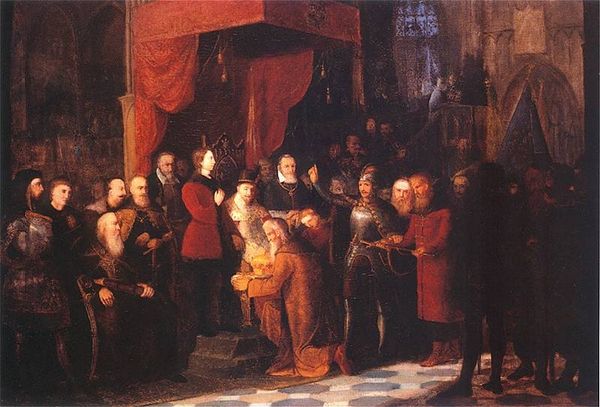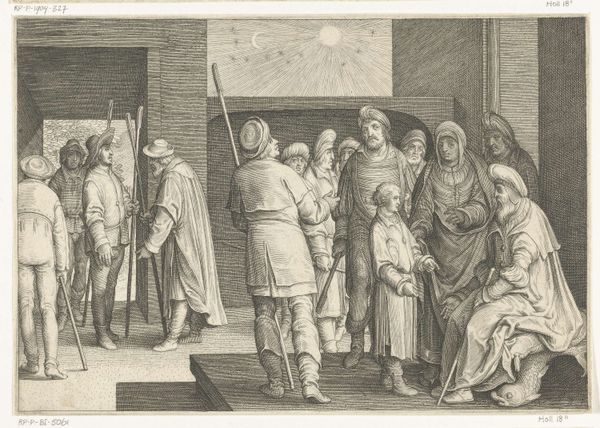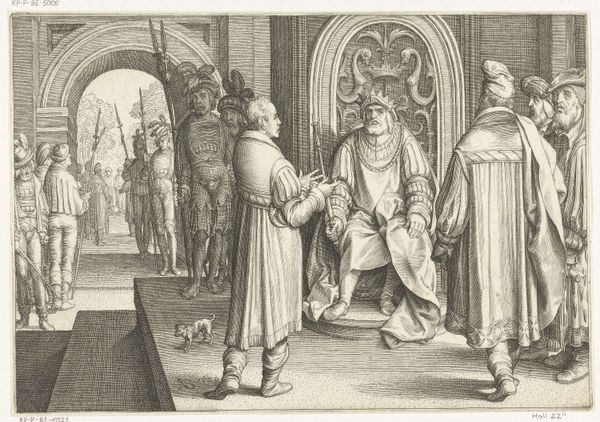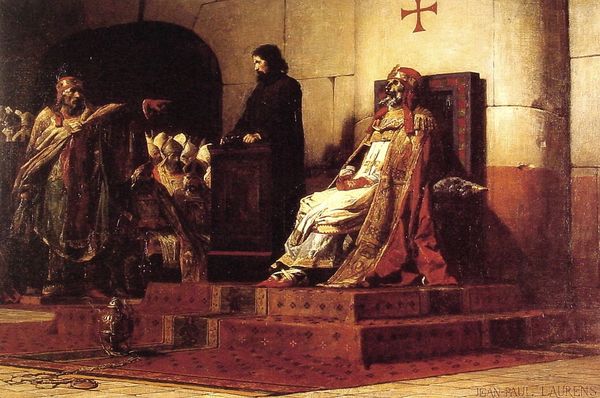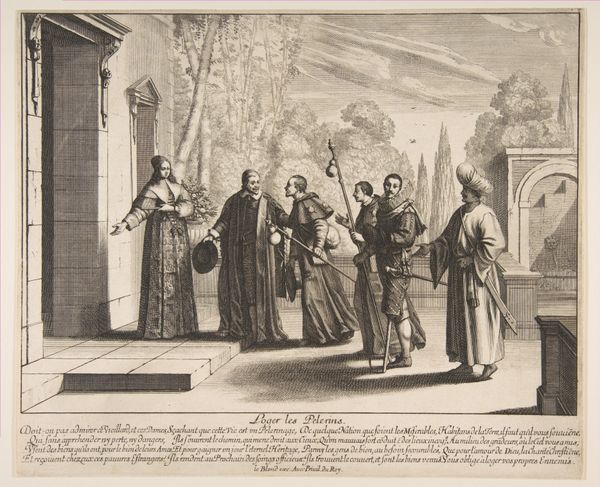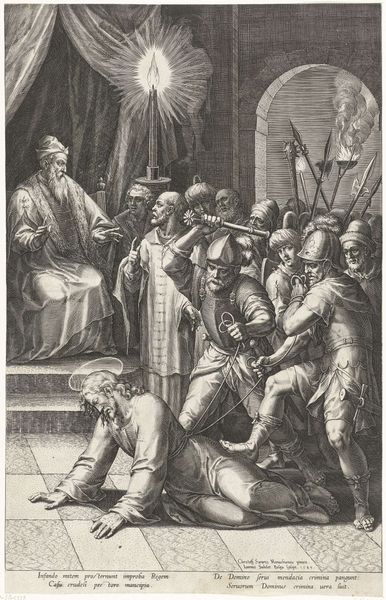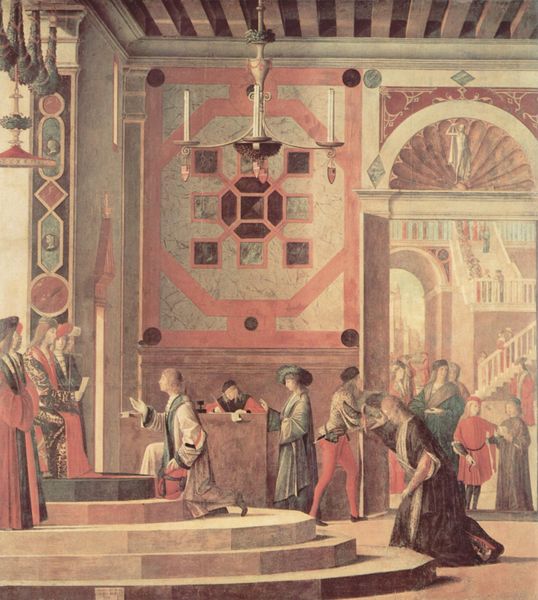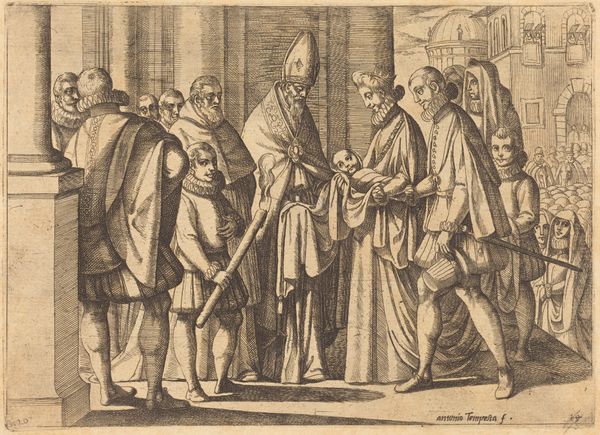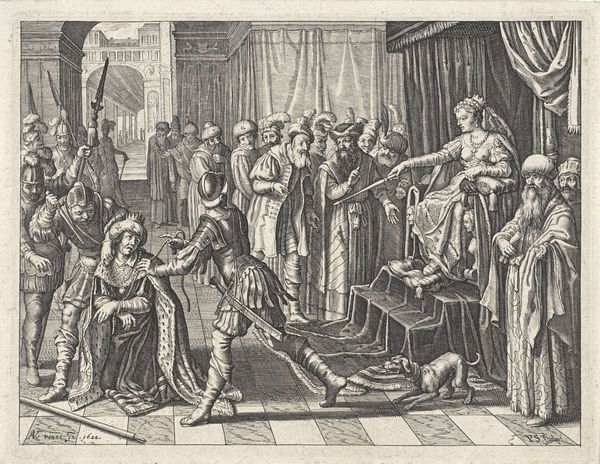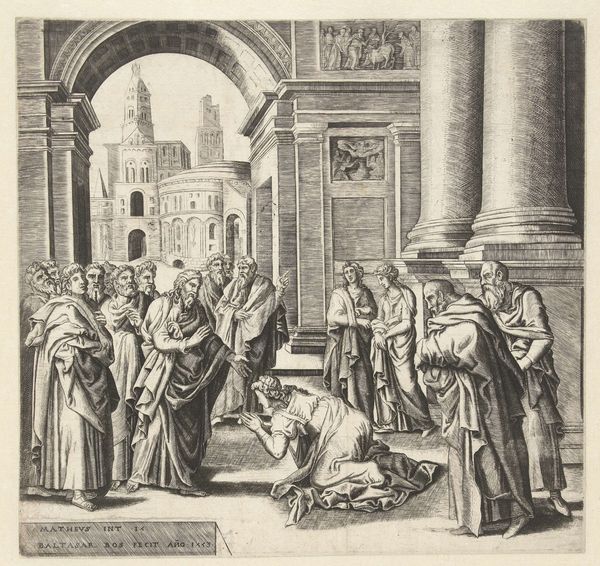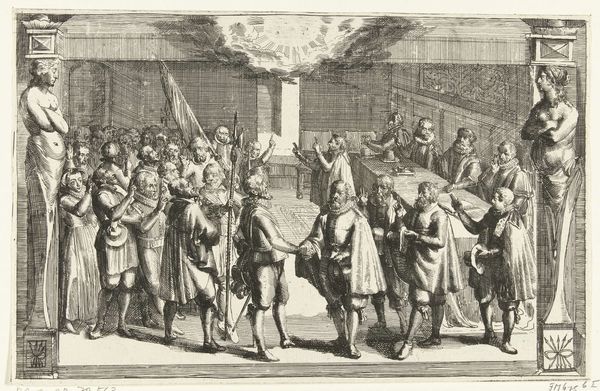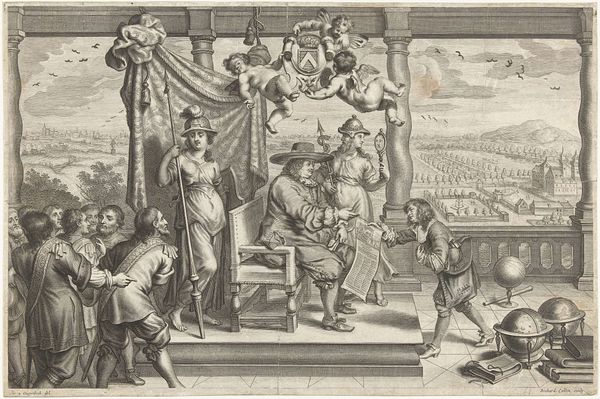
painting, oil-paint
#
portrait
#
baroque
#
painting
#
oil-paint
#
oil painting
#
romanticism
#
history-painting
Copyright: Public domain
Editor: So, here we have "Vlad the Impaler and the Turkish Envoys", an oil painting by Theodor Aman. The architecture is quite striking, and everyone is dressed very elaborately, but there’s something… uneasy in the air. What do you see in this piece? Curator: This painting offers a fascinating lens through which to examine the socio-economic dynamics of artistic production. Consider the oil paint itself: a product of specific industries and trade routes, reflecting access to resources. Look at how Aman deploys color and light to differentiate the figures; those distinctions weren’t simply aesthetic, but materially constructed through pigment choices tied to wealth, class and political standing. How might the availability and cost of these materials have influenced the artwork’s creation and reception? Editor: So, the pigments used tell a story of who had power and resources at the time. Interesting. What about the composition? The checkerboard floor and the arrangement of figures create a very deliberate stage. Curator: Exactly! Think of the labor involved in producing that marble floor, versus the probable conditions faced by those creating the fabrics worn by the figures. This isn't just about aesthetics; it's about understanding the painting as a material artifact embedded in complex economic relations and historical labor conditions. Also, note that painting history creates labor for other people (artisans making the canvas, framing, transporting etc). What does that entail? Editor: It seems the painting prompts us to consider art production as more than the artist's individual expression; it is a manifestation of material processes and social hierarchies. I hadn’t considered that the details were such important factors in creating and contextualizing the work! Curator: Precisely. It's about tracing those threads of material production and recognizing the power dynamics embedded in even a seemingly historical image like this one.
Comments
No comments
Be the first to comment and join the conversation on the ultimate creative platform.
